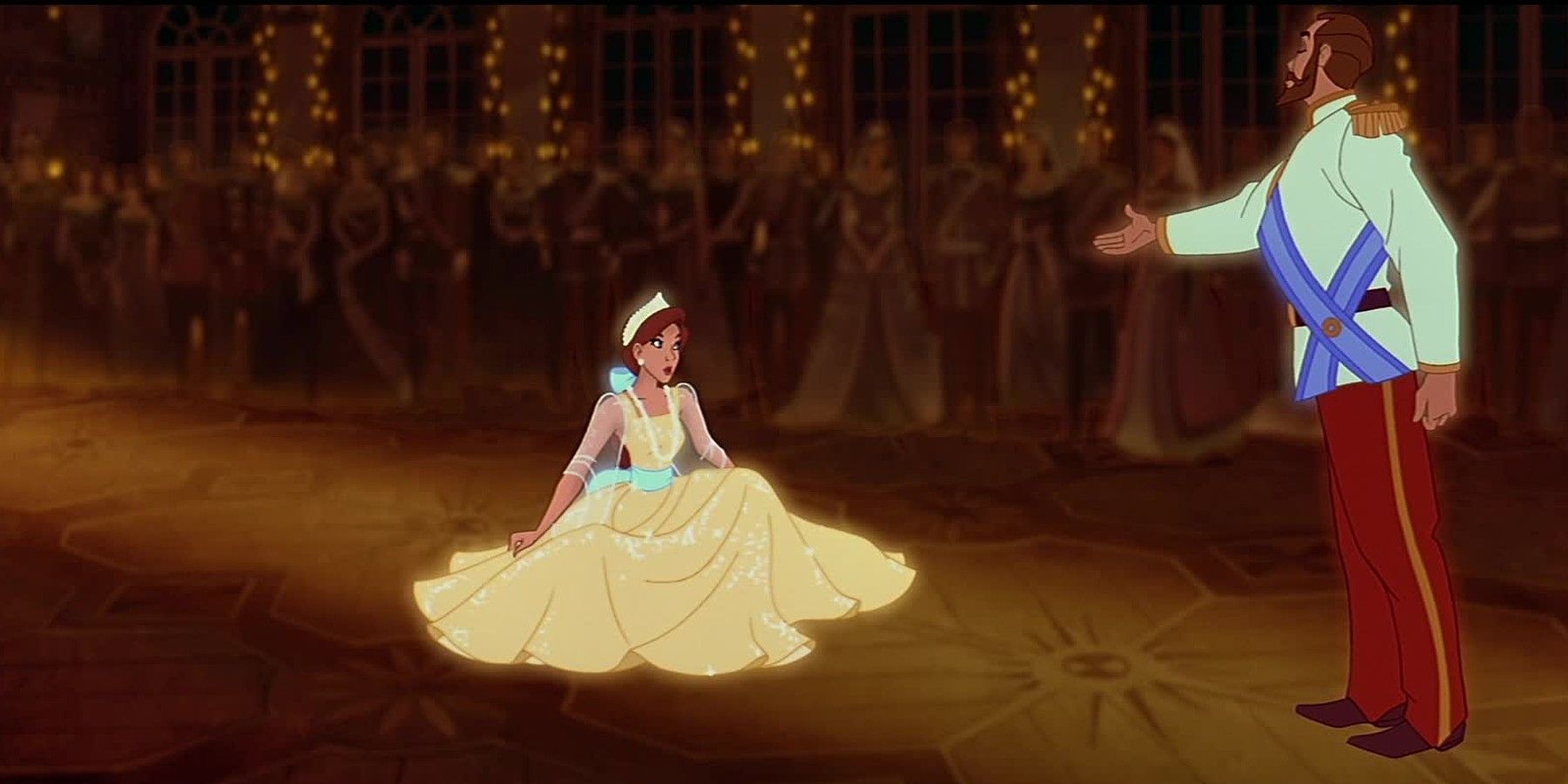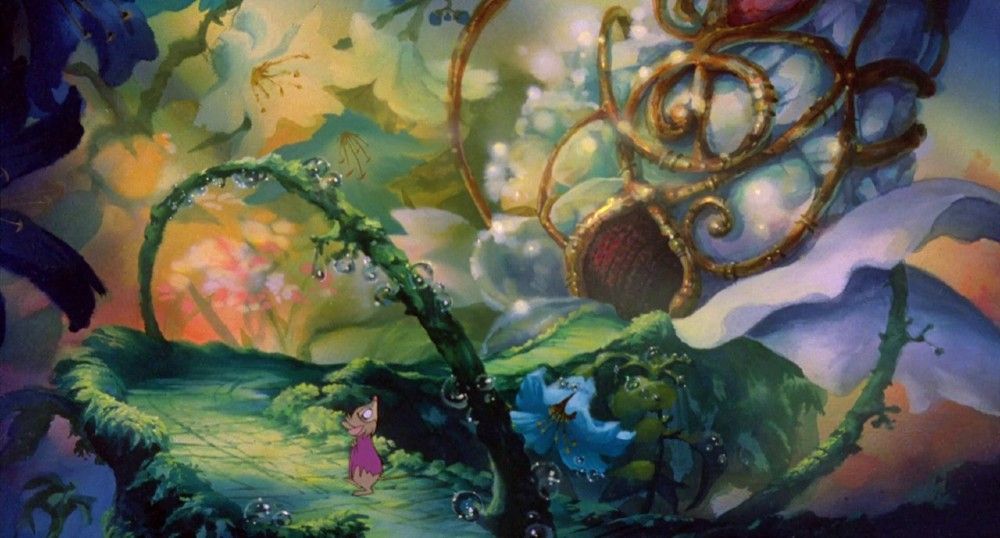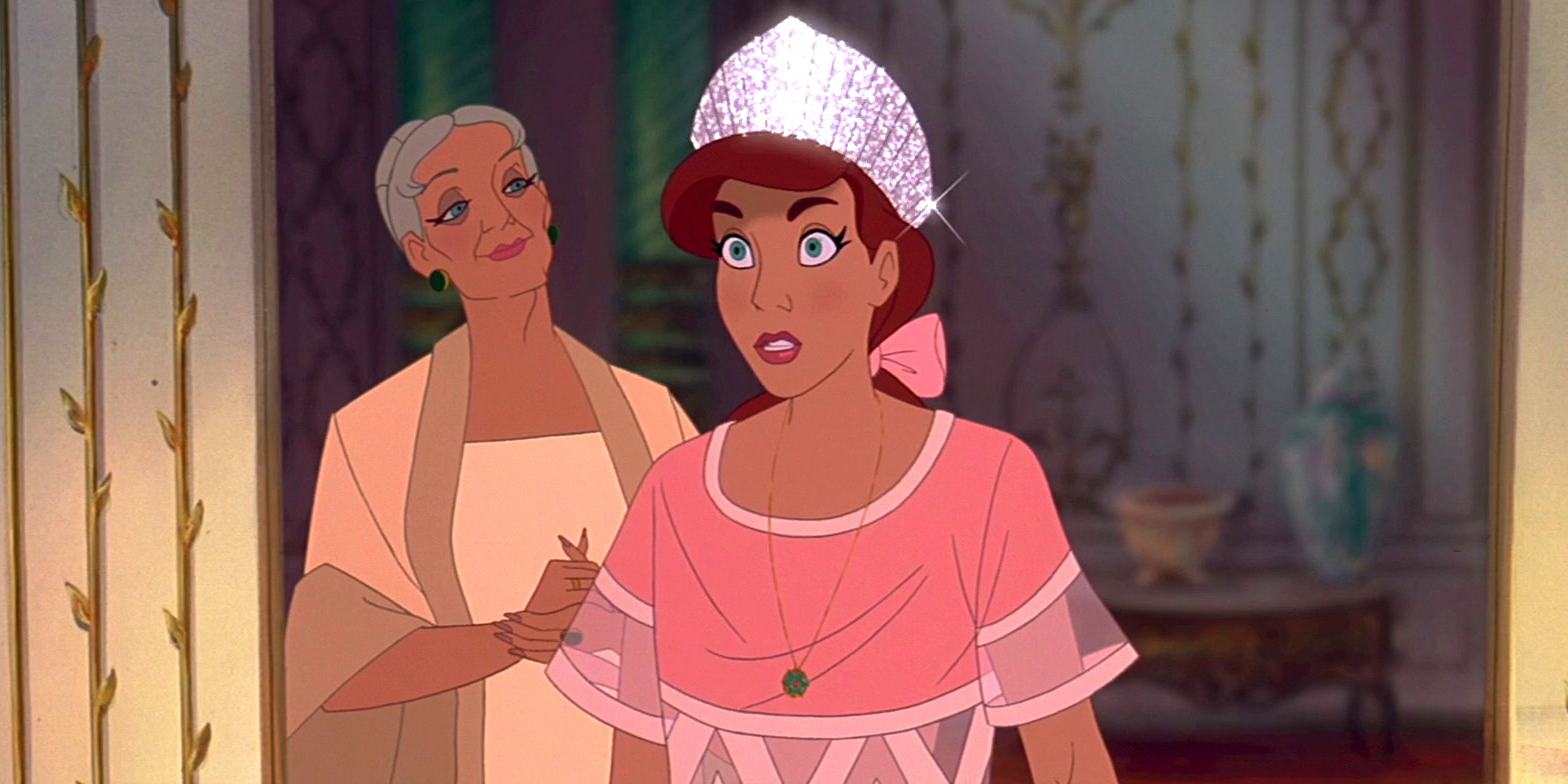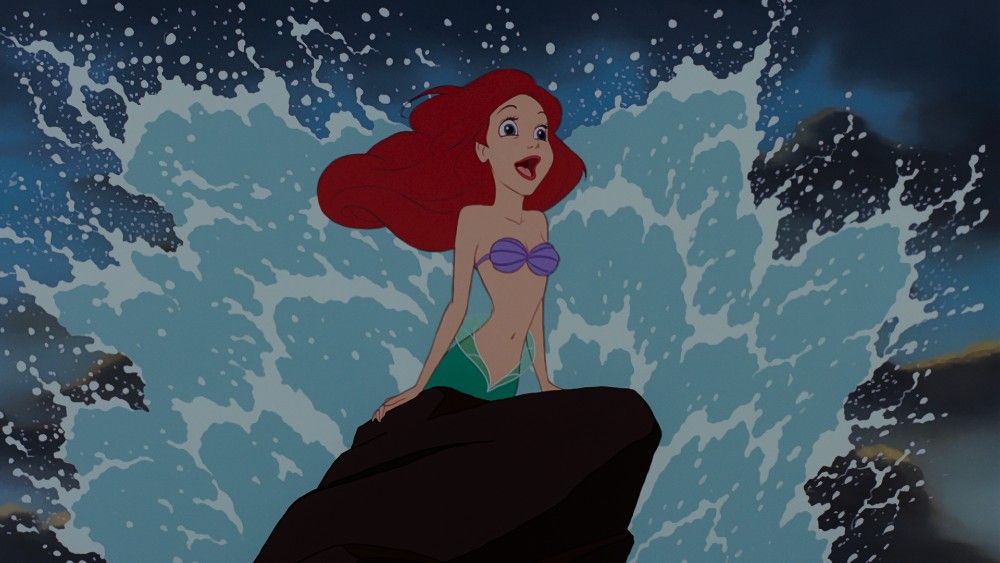Disney+ recently made waves online by promoting the 1997 animated musical Anastasia, which arrived on the streaming service earlier this month. For those unaware of the film's history, this might not seem like a big deal. After all, it makes sense to re-release a film featuring the song “Once Upon a December” in December. However, there is a hidden history behind Anastasia that involves a rivalry between its co-director Don Bluth and Disney that stretches back decades. Like the convoluted Russian history that Anastasia (loosely) depicts, there is an intriguing backstory for why Disney+ streaming Bluth’s film is so strange.
Bluth is a highly influential figure in American animation. Having been personally inspired by Snow White and the Seven Dwarfs (1937) growing up, Bluth eventually joined up with Disney to work on films like Robin Hood (1973) and Pete’s Dragon (1977) and directed his own short featurettes, including The Small One. However, Bluth and other animators were disheartened by Disney’s approach, feeling they had lost the craftsmanship and production values of Walt Disney’s original tenure.
During the development of The Fox and the Hound, Bluth had seen enough, so he, alongside several other animators, quit Disney and formed their own competing studio, Don Bluth Productions. Bluth Productions was a fierce competitor for Disney Animator during the 1980s, creating formidable animated classics like The Secret of NIMH and The Land Before Time. Bluth’s critical success with his painstaking and expensive animation did not always translate into financial success, however, as the studio had to be saved from bankruptcy from businessman Morris Sullivan, creating Sullivan Bluth Studios in 1985. Steven Spielberg also got involved, creating the immigrant parable An American Tail, which became the highest-grossing non-Disney animated film of all time.
At this same time, Disney Animation was fledgling. Its expensive and “mature” feature, The Black Cauldron, was an enormous flop that only grossed half its budget. Animation had formerly been the bedrock of Disney, but now it was becoming irrelevant next to live-action films and theme-parks. Galvanized by The Black Cauldron’s failure and Bluth’s successes, Disney restructured its animation division. Roy E. Disney brought on Michael Eisner as Disney’s new CEO, who put Jeffrey Katzenberg in charge of overall film production and Peter Schneider to run the animation department.
The next year, The Great Mouse Detective, although not as successful as An American Tail, gained enough of a response to be successful. The reinvigorated animation division of Disney then released the one-two punch of the award-winning live-action/animated hybrid Who Framed Roger Rabbit? followed by The Little Mermaid (1989). The Disney Renaissance had arrived.
For Disney Animation, the rest is history. Through a combination of returning to the fairy tales of classic ‘40s Disney and blockbuster animation style, Disney Animation became had a run of successful and still iconic hits. Beauty and the Beast (1991) became the first animated film nominated for Best Film at the Oscars. Releases like Aladdin (1992), The Lion King (1994), Pocahontas and The Hunchback of Notre Dame would then go on to prove that Disney Animation was continuing on the right track.
But for Sullivan Bluth, this streak mirrored its decline. Released on the same day as The Little Mermaid, its competitive film All Dogs Go to Heaven paled in comparison. In fairness, the film itself is a strange project, following a poker-playing German Shepard Charlie (voiced by Burt Reynolds) who not only is murdered but then escapes from Heaven to return to Earth. Perhaps bolstered by his ‘80s successes, Bluth unleashed a bizarre streak of features that failed to connect with mainstream audiences. These failures forced Bluth and his partner since the Disney walk-out in 1978 Gary Goldman to close down Sullivan Bluth in 1995 to set up an in-house animation studio for 20th Century Fox.
Enter Anastasia. The film is a loose adaptation of the story of the Grand Duchess Anastasia, the youngest daughter of Tsar Nicholas II who was rumored to have the execution of the Imperial Family during the 1917 Russian Revolution. Adapting such immediate 20th-century history into a family-friendly animated film seems odd, particularly when Anastasia avoids much political realism to focus upon a romantic musical between an amnesiac “Anya” (Meg Ryan) and conman Dmitri (John Cusack). Real-life historical figure Rasputin (Christopher Lloyd), a scandalous “holy man” who befriends the Royal Family, is reimagined as an evil, limb-detachable, sorcerer determined to kill the surviving Tsars with a talking albino bat as his minion.
Despite all of that, however, this magical retelling of history is only a more egregious version of what Pocahontas or Hunchback of Notre Dame did. Anastasia’s animal sidekicks, the sweeping musical numbers and that Anastasia herself is a “princess” clearly show that Bluth and 20th Century Fox were trying to replicate the success of the “Disney Princess." For better or worse, Anastasia is a clear departure from Bluth’s original output. Regardless of the quality of Anastasia itself -- the animation fluctuates between gorgeous set-pieces and shocking rotoscoping -- the Disney parallels were inescapable.
In a way, those parallels worked in the movie's favor. Anastasia remains Bluth’s most financially successful film and it established Fox Animation as a serious competitor to Disney. But around this time, new CGI-animation studios like Pixar and DreamWorks Animation were appearing. Bluth tried to incorporated CGI elements alongside traditional animation in Titan A.E. (2000), but that project ended up being one of the flops that pushed Fox Animation to shut down in 2000. Bluth has not created a feature film since. He has attempted to resurrect “traditional hand-drawn animation” a few times, including launching Don Bluth Studios in 2020. As for 20th Century Fox, it and all its old assets (including Anastasia) were acquired in 2019 by the Walt Disney Company, which led to the film's release on Disney+.
Of course, all of this is just business. There is nothing wrong with Disney hosting a film they now own, and it’s probably better for fans of Anastasia that they can easily access it. But its arrival on Disney+ simply shows the long winding arc of American animation history. Bluth had originally left Disney due to its lack of animation, and his competition pushed Disney into its animated renaissance. Then, Bluth was left trying to imitate Disney’s style with Anastasia, which itself has now landed back with Disney. Bluth changed the landscape of American animation, and now for better or worse, a fruit of his labor has landed back at Disney, whose failures and success had indirectly created it.




